KNOW YOUR PEARLS!
NATURAL, CULTURED OR IMITATION?
HOW TO KEEP THEM SHINING?
Women love pearls! Most women has at least one necklace in their jewelry box. To many, it is a beautiful piece of jewelry but to the jewelers, they are more than that.
They are the wonders of the sea. They are also the products of the clever technology of man. So what are these lustre sea beauties?
Do any of us really know what we are wearing?
Wonders of the Sea
These pearly jewels come from the sea. They are the products of a natural process. A foreign particle, either a grain of sand or a small parasite, found its way into an oyster or a mussel. This foreign particle causes irritation to the oyster or mussel and thus as a natural defense, the shellfish began to secrete layers of aragonite, known as 'nacre' onto and around the irritant. As time passes, this iridescent substance covers the irritant in concentric layers and a natural pearl is formed. It takes about 9 to 15 years to produce a decent size pearl.
Freshwater & Saltwater
These are cultivated in both freshwater and saltwater locations. Mussels are used in freshwater locations while oysters in saltwater.
Not all insertions are successful. There are a certain percentage of rejections and thus whether it's cultured or natural, each piece is still a wonderful creation of nature.
What we see in the market are mostly cultured. Natural ones are rare and needless to say, very expensive.
Color
Usually, the first thing we look at is the color. The most common colors are white, cream and yellow. And the rare colors are pink, gold, blue and black.
Imitation
These are manufactured using shell, glass, plastic or any other materials, forming them into beads and coating with fish scales. Many of these look like the real things. To know the difference, you might like to try the 'tooth test'.
The Tooth Test
This is done by rubbing it gently against the biting edge of your two front teeth. Real ones will feel sandy or gritty whereas the imitation one will feel very smooth against your teeth.
Dyed Pearls
Among the dyed colors used are strong purple, shocking pink, gold, silver, blue, yellow and green. Dyed cultured ones are great for making jewelry that calls for a particular color theme.
Some Jewelry Pieces
How To Clean Them
- Soak them in tap water for 5 minutes.
- Add 2 to 3 drops of mild non-detergent e.g. Woolite, Palmolive or Fairy Liquid.
- Use a soft brush and brush in a circular motion.
- Rinse under running water making sure that no soap residue remains.
- Pat dry on a towel and leave to air-dry for at least 24 hours.
- Restring if necessary.
Caring For Them
- Do not go swimming with them. The chemical in the water will damage them.
- Keep perfume, hairspray and makeup from touching them.
- Keep them separated from metal jewelry since they are soft and can be easily damaged when rubbed against the metal.
- Keep them in a soft cloth pouch or a cushioned jewelry box.
What To Look Out For When Shopping For These Beauties
Look at the whole strand and note the color, shape and lustre. All should be uniform or as close to uniformity as possible.
- Color: Color should be consistent and the surface smooth and as much as possible without blemish. Preferred overtone is pink. To see the overtone, place them against a pure white background. Most jewelers use the back of their pure white colored name cards.
- Shape: There are 3 kinds of shape. Spherical - round shape. Semi Baroque or Symmetrical - oval, or pear shape. Baroque - distorted and irregular shape.
Example of a Spherical Shape
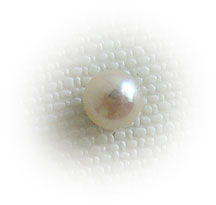
Example of a Semi Baroque or Symmetrical Shape
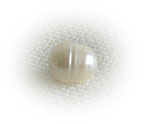
Example of a Baroque - Irregular Shape
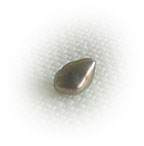
Sticks
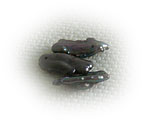
- Lustre: Good lustre is like looking into a mirror. You can see your reflection on its surface; even the color of your clothes.
Home › Know Your Pearly Jewels
Jewelry Inspirations
Sign up now! I'll send Jewelry Inspirations straight to your inbox. It's FREE!
Recent Articles
-
Jewelry Making Instructions' Privacy Policy
May 29, 18 10:43 AM
Privacy Policy of Jewelry Making Instructions. Please read before browsing this jewellery making website. -
Rings That Are Uniquely Yours
May 30, 15 03:46 AM
Wear rings that are uniquely you. Instructions provided here for making ring jewelry. -
Pink Swarovski Crystal Earrings! Need Them Fast?
May 30, 15 02:07 AM
Make this pair of sweet pink Swarovski crystal earrings in 30 minutes and wear it for a date or just shopping in the mall.
If any piece of DIY jewelry here on this website has inspired you to make something beautiful for yourself or a friend, please share it with someone today.
Use the social buttons below to share with your friends or fans.
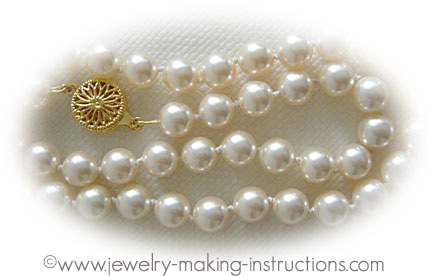
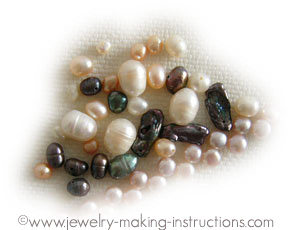
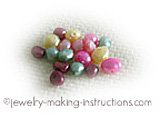
New! Comments
Have your say about what you just read! Leave me a comment in the box below.